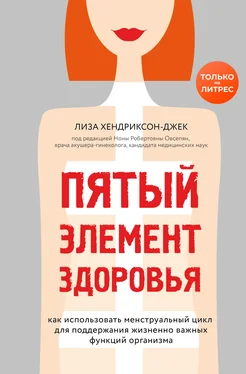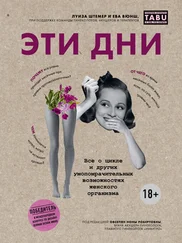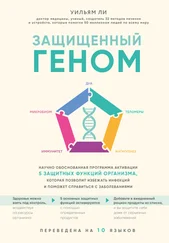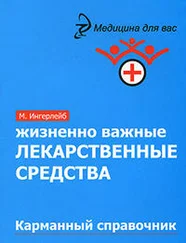28. Jabbar, Abdul, Aasma Yawar, Sabiha Waseem, Najmul Islam, Naeem Ul Haque, Lubna Zuberi, Ataullah Khan, and Jaweed Akhter. “Vitamin B12 deficiency common in primary hypothyroidism.” Journal of the Pakistan Medical Association 58, no. 5 (2008): 258.
29. Dakshinamurti, K., C.S. Paulose, J.A. Thliveris, and J. Vriend. “Thyroid function in pyridoxine-deficient young rats.” Journal of Endocrinology 104, no. 3 (1985): 339–344.
30. Chandrasekhar, K., Jyoti Kapoor, and Sridhar Anishetty. “A prospective, randomized double-blind, placebo-controlled study of safety and efficacy of a high-concentration full-spectrum extract of ashwagandha root in reducing stress and anxiety in adults.” Indian Journal of Psychological Medicine 34, no. 3 (2012): 255–262.
31. Sharma, Ashok Kumar, Indraneel Basu, and Siddarth Singh. “Efficacy and safety of ashwagandha root extract in subclinical hypothyroid patients: a double-blind, randomized placebo-controlled trial.” The Journal of Alternative and Complementary Medicine 24, no. 3 (2018): 243–248.
32. Clements Jr., Rex S., and Betty Darnell. “Myo-inositol content of common foods: development of a high-myo-inositol diet.” The American Journal of Clinical Nutrition 33, no. 9 (1980): 1954–1967; Williams, Peter. “The missing vitamin alphabet.” Nutrition & Dietetics 73, no. 2 (2016): 205–214.
33. Ferrari, S.M., P. Fallahi, F. Di Bari, R. Vita, S. Benvenga, and A. Antonelli. “Myo-inositol and selenium reduce the risk of developing overt hypothyroidism in patients with autoimmune thyroiditis.” European Review for Medical and Pharmacological Sciences 21, no. 2 supplement (2017): 36–42; Nordio, Maurizio, and Raffaella Pajalich. “Combined treatment with myo-inositol and selenium ensures euthyroidism in subclinical hypothyroidism patients with autoimmune thyroiditis.” Journal of Thyroid Research (2013): 1–5; Nordio, M., and S. Basciani. “Myo-inositol plus selenium supplementation restores euthyroid state in Hashimoto’s patients with subclinical hypothyroidism.” European Review for Medical and Pharmacological Sciences 21, no. 2 Suppl (2017): 51–59.
34. Nestler, John E., Daniela J. Jakubowicz, William S. Evans, and Renato Pasquali. “Effects of metformin on spontaneous and clomiphene-induced ovulation in the polycystic ovary syndrome.” New England Journal of Medicine 338, no. 26 (1998): 1876–1880.
35. Siavash, Mansour, Majid Tabbakhian, Ali Mohammad Sabzghabaee, and Niloufar Razavi. “Severity of gastrointestinal side effects of metformin tablet compared to metformin capsule in type 2 diabetes mellitus patients.” Journal of Research in Pharmacy Practice 6, no. 2 (2017): 73–76.
36. Gower, Barbara A., Paula C. Chandler-Laney, Fernando Ovalle, Laura Lee Goree, Ricardo Azziz, Renee A. Desmond, Wesley M. Granger, Amy M. Goss, and G. Wright Bates. “Favourable metabolic effects of a eucaloric lower– carbohydrate diet in women with PCOS.” Clinical Endocrinology 79, no. 4 (2013): 550–557.
37. Nichols, Lily. (2018). Real Food for Pregnancy: The Science and Wisdom of Optimal Prenatal Nutrition. Lily Nichols, 141.
38. Westman, Eric C., William S. Yancy Jr., Mark D. Haub, and Jeff S. Volek. “Insulin resistance from a low carbohydrate, high fat diet perspective.” Metabolic Syndrome and Related Disorders 3, no. 1 (2005): 14–18.
39. Atkinson, Fiona S., Kaye Foster-Powell, and Jennie C. Brand-Miller. “International tables of glycemic index and glycemic load values: 2008.” Diabetes Care 31, no. 12 (2008): 2281–2283.
40. Gower, Barbara A., and Amy M. Goss. “A lower-carbohydrate, higher-fat diet reduces abdominal and intermuscular fat and increases insulin sensitivity in adults at risk of type 2 diabetes.” The Journal of Nutrition 145, no. 1 (2014): 177S–183S; McGrice, Melanie, and Judi Porter. “The effect of low carbohydrate diets on fertility hormones and outcomes in overweight and obese women: a systematic review.” Nutrients 9, no. 3 (2017): 1–11.
41. Mavropoulos, John C., William S. Yancy, Juanita Hepburn, and Eric C. Westman. “The effects of a low-carbohydrate, ketogenic diet on the polycystic ovary syndrome: a pilot study.” Nutrition & Metabolism 2, no. 1 (2005): 1–5.
42. Gower, Barbara A., Paula C. Chandler-Laney, Fernando Ovalle, Laura Lee Goree, Ricardo Azziz, Renee A. Desmond, Wesley M. Granger, Amy M. Goss, and G. Wright Bates. “Favourable metabolic effects of a eucaloric lower– carbohydrate diet in women with PCOS.” Clinical Endocrinology 79, no. 4 (2013): 550–557.
43. Thomson, Rebecca L., Simon Spedding, and Jonathan D. Buckley. “Vitamin D in the aetiology and management of polycystic ovary syndrome.” Clinical Endocrinology 77, no. 3 (2012): 343–350; Vieth, Reinhold. “Why the optimal requirement for Vitamin D3 is probably much higher than what is officially recommended for adults.” The Journal of Steroid Biochemistry and Molecular Biology 89 (2004): 575–579; Holick, Michael F. “Vitamin D deficiency.” New England Journal of Medicine 357, no. 3 (2007): 266–281; Souberbielle, Jean-Claude, Jean-Jacques Body, Joan M. Lappe, Mario Plebani, Yehuda Shoenfeld, Thomas J. Wang, Heike A. Bischoff-Ferrari et al. “Vitamin D and musculoskeletal health, cardiovascular disease, autoimmunity and cancer: recommendations for clinical practice.” Autoimmunity Reviews 9, no. 11 (2010): 709–715.
44. Teegarden, Dorothy, and Shawn S. Donkin. “Vitamin D: emerging new roles in insulin sensitivity.” Nutrition Research Reviews 22, no. 1 (2009): 82–92; Kotsa, Kalliopi, Maria P. Yavropoulou, Olympia Anastasiou, and John G. Yovos. “Role of vitamin D treatment in glucose metabolism in polycystic ovary syndrome.” Fertility and Sterility 92, no. 3 (2009): 1053–1058.
45. Pal, Lubna, Heping Zhang, Joanne Williams, Nanette F. Santoro, Michael P. Diamond, William D. Schlaff, Christos Coutifaris et al. “Vitamin D status relates to reproductive outcome in women with polycystic ovary syndrome: secondary analysis of a multicenter randomized controlled trial.” The Journal of Clinical Endocrinology & Metabolism 101, no. 8 (2016): 3027–3035.
46. Muneyyirci-Delale, O., V.L. Nacharaju, M. Dalloul, S. Jalou, M. Rahman, B.M. Altura, and B.T. Altura. “Divalent cations in women with PCOS: implications for cardiovascular disease.” Gynecological Endocrinology 15, no. 3 (2001): 198–201; von Ehrlich, B., M. Barbagallo, H.G. Classen, F. Guerrero-Romero, F.C. Mooren, M. Rodriguez-Moran, W. Vierling, J. Vormann, and K. Kisters. “Significance of magnesium in insulin resistance, metabolic syndrome, and diabetes recommendations of the Association of Magnesium Research e.V.” Trace Elements and Electrolytes 34, no. 3 (2017): 124–129; Barbagallo, Mario, and Ligia J. Dominguez. “Magnesium and type 2 diabetes.” World Journal of Diabetes 6, no. 10 (2015): 1152–1157; Dibaba, Daniel T., Pengcheng Xun, and Ka He. “Dietary magnesium intake is inversely associated with serum C-reactive protein levels: meta-analysis and systematic review.” European Journal of Clinical Nutrition 68, no. 4 (2014): 510–516.
47. Guerrero-Romero, F., H.E. Tamez-Perez, G. González-González, A.M. Salinas-Martinez, J. Montes-Villarreal, J.H. Trevino-Ortiz, and M. Rodriguez-Moran. “Oral magnesium supplementation improves insulin sensitivity in non-diabetic subjects with insulin resistance. a double-blind placebo-controlled randomized trial.” Diabetes and Metabolism 30, no. 3 (2004): 253–258; Simental-Mendía, Luis E., Martha Rodríguez-Morán, and Fernando Guerrero-Romero. “Oral magnesium supplementation decreases C-reactive protein levels in subjects with prediabetes and hypomagnesemia: a clinical randomized double-blind placebo-controlled trial.” Archives of Medical Research 45, no. 4 (2014): 325–330.
48. Kanafchian, Maryam, Soleiman Mahjoub, Sedigheh Esmaeilzadeh, Maryam Rahsepar, and Abbas Mosapour. “Status of serum selenium and zinc in patients with the polycystic ovary syndrome with and without insulin resistance.” Middle East Fertility Society Journal (2017): 1–5; Guler, Ismail, Ozdemir Himmetoglu, Ahmet Turp, Ahmet Erdem, Mehmet Erdem, M. Anıl Onan, Cagatay Taskiran, Mine Yavuz Taslipinar, and Haldun Guner. “Zinc and homocysteine levels in polycystic ovarian syndrome patients with insulin resistance.” Biological Trace Element Research 158, no. 3 (2014): 297–304.
Читать дальше
Конец ознакомительного отрывка
Купить книгу












